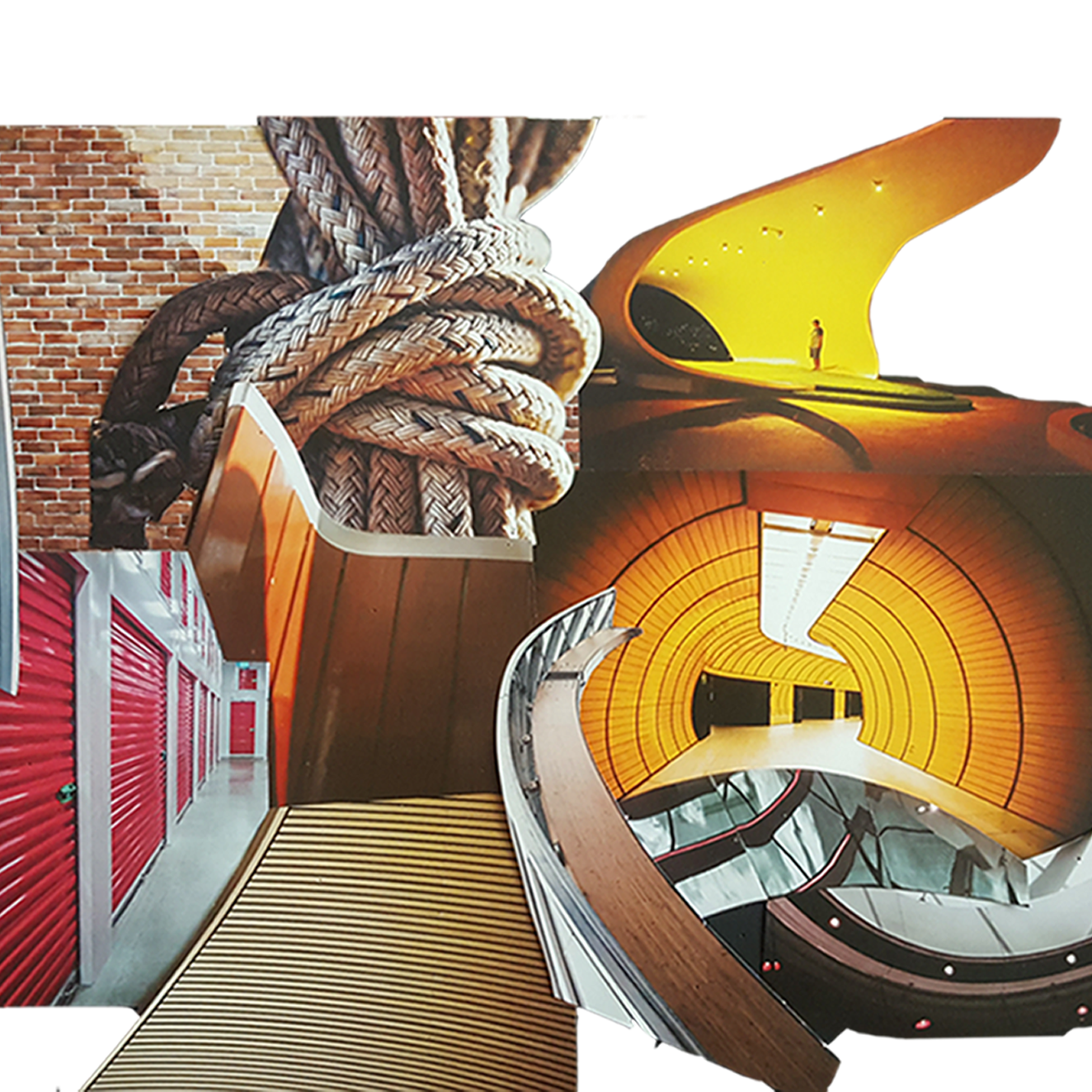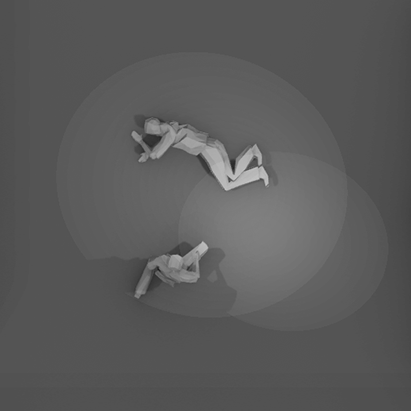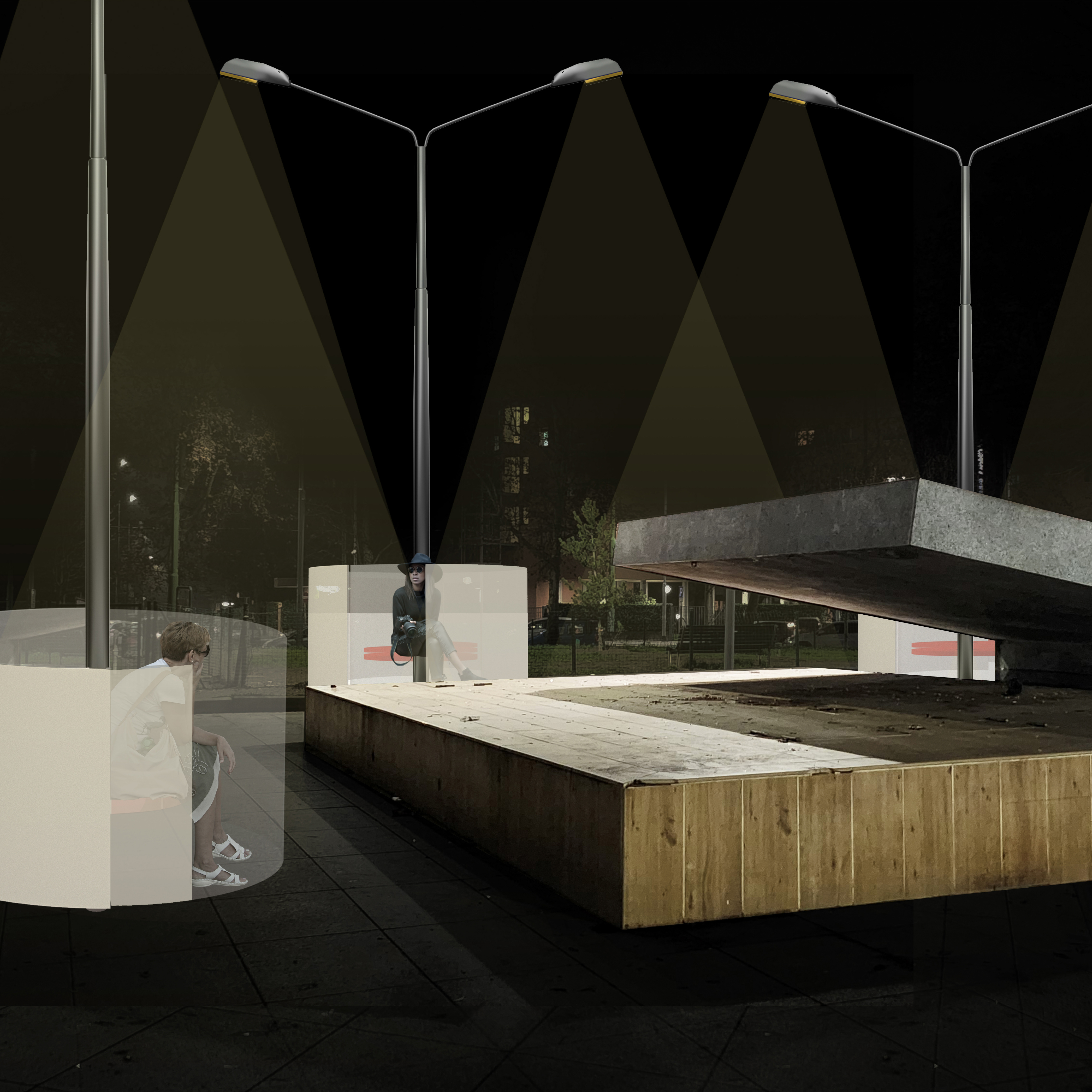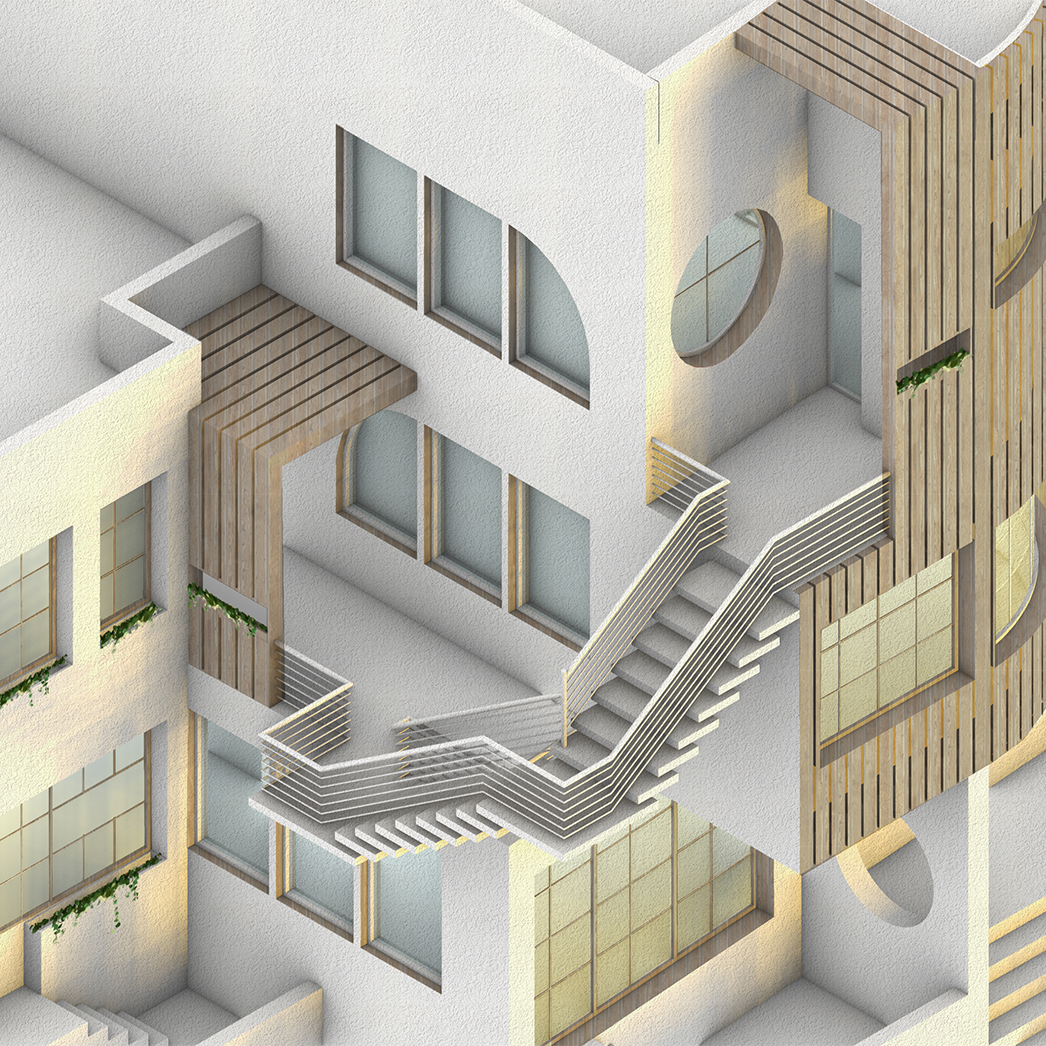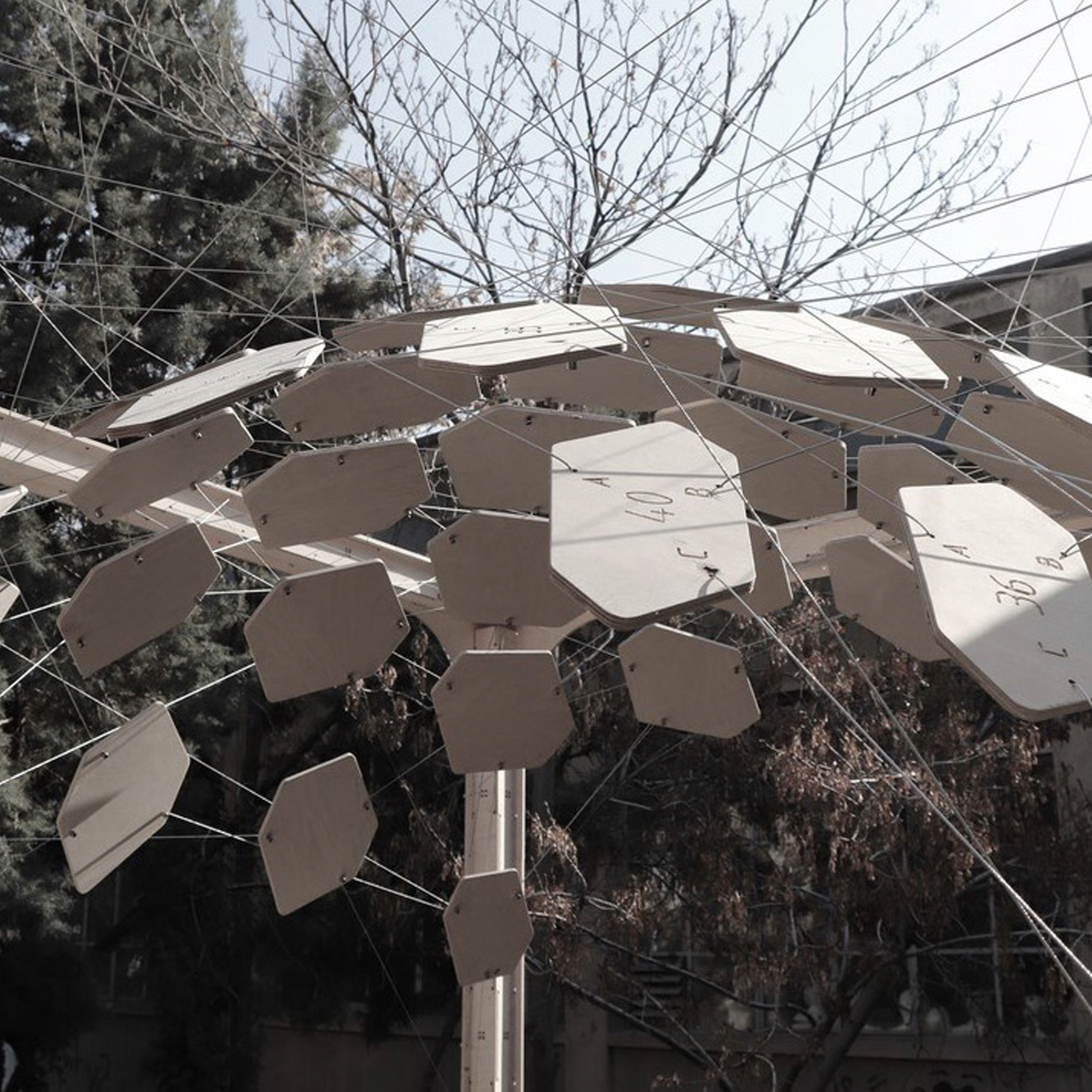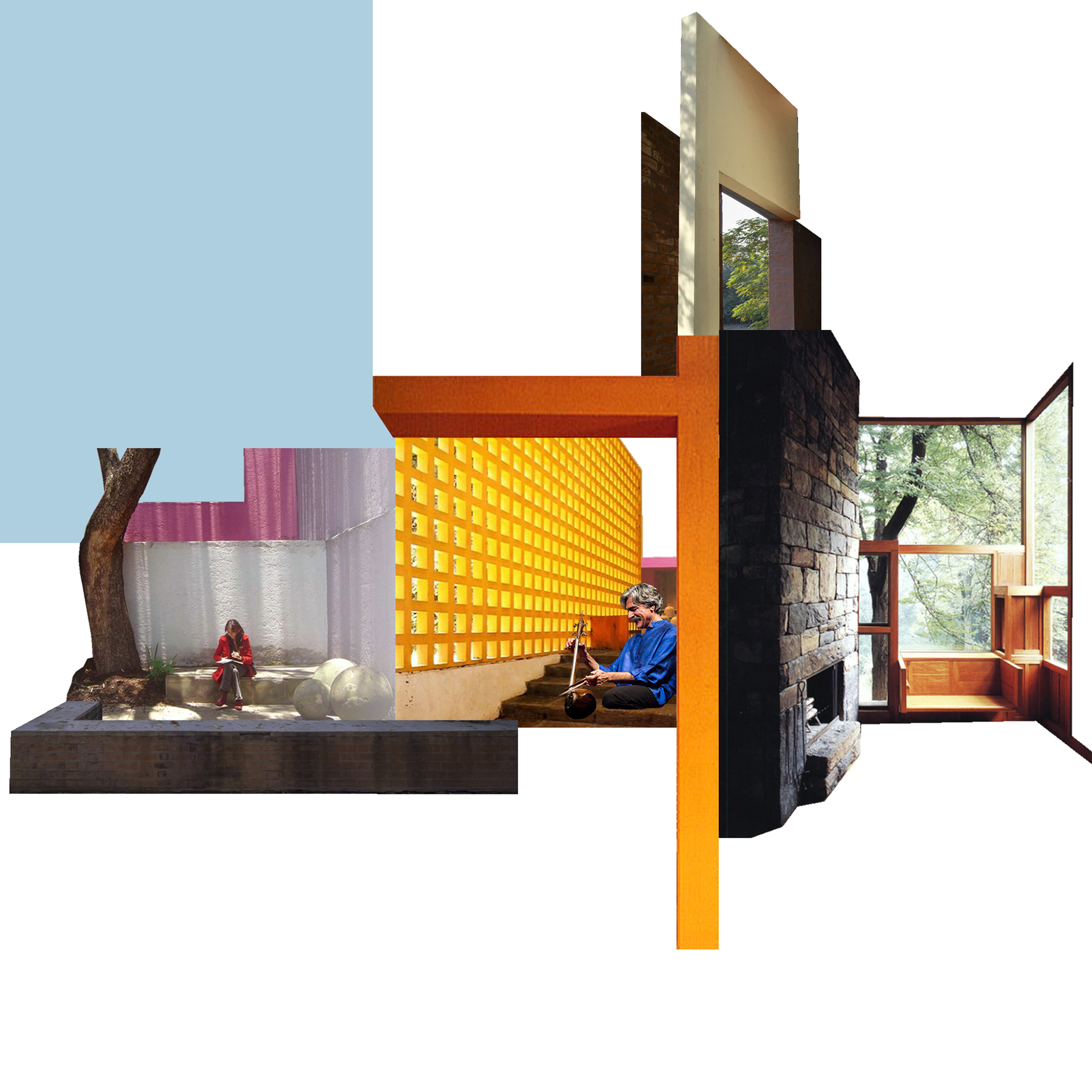Academic Project / Contest Design Studio / Politecnico di Milano / Group Project / Winter 2024 / Milan, Italy
Supervisors: Peter Di Sabatino / Frank clementi / Monica Mazzolani
Teammates: Sofia Marietti / Fiorenza Protti / Benedetta Spada / Nihan Taspinar
We created four different mazes, entirely moon time-based, that can reveal, during the lunar phases, hidden environments where visitors can lose themselves and be guided by glares and games of light to find the right way to the moon and exit from those immersive spaces that envelop them.
MOON ANALYSIS
WHAT DOES THE MOON REPRESENT?
The phases of the moon play a foundational role in the magical realm and are essential for aligning with cosmic influences. Each phase comes with its unique symbols, powers, and correspondences. It affects not only water and crops but also has significant impacts on the physical and spiritual energies of animals and humans.
THE MOON’S ORBIT AND ROTATION
THE MOON’S PHASES AND POSITIONS
The moon completes one orbit around our planet approximately every 27.322 days, following an elliptical path. It is tidally locked with Earth, indicating that it rotates on its axis precisely once during each orbit around our planet.
The shape of the Moon remains constant throughout the month; however, our perspective of it changes. The Sun's light brightly illuminates the side of the Moon facing the Sun, leaving the other side in darkness. On Earth, our observation of the illuminated portion of the Moon shifts each night, influenced by the Moon's position in its orbit or path around Earth.
Apart from the New Moon and Full Moon, there are other lunar phases crucial for comprehending the project's design. Following the New Moon, as the Moon progresses in its orbit, it moves towards the West and becomes increasingly visible. On the first day, it appears as a small segment that enlarges day by day until it reaches the First Quarter. This Waxing phase culminates with the Full Moon. In the second half of the month, the Waning phase begins, and the Moon starts to shrink. The illuminated part decreases, but now with the hump of the Moon facing in the opposite direction, leading to the Third Quarter. The Moon continues to wane until it reaches the New Moon, completing the cycle of lunar phases.
The project's design aims to incorporate these lunar phase characteristics, seeking to apply them spatially in the designed environment. Elements such as circular movement and the transformation of shapes associated with temporality form the core of the project.
MOONRISE - MOONSET
LUNAR CALENDAR CORRESPONDENT TO THE 2024 SOLAR YEAR
PHASING + TRANSFORMATION
A plan of action crafted to accomplish our time-based design incorporated strategies of phasing and transformation, guiding us effectively through the design process.
"Phasing," derived from the Greek words meaning "appearance" or "show oneself," refers to each distinctive and differentiated moment within a cycle. It signifies changes compared to a preceding period and marks moments of development.
In astronomy, phasing denotes each aspect that the Moon and some planets present, influenced by their motions and the variations in their visible portions.
"Transformation," originating from the Latin word "transformatio -onis" meaning "change the form" or "give a different shape," entails a shift or alteration in form, appearance, nature, structure, or character, occasionally taking on a radical nature.
These two strategies served as guides, enabling us to develop the project. Our strategies were employed to ensure that every design choice aligns with the creation of a time-based design project, emphasizing that each asset is crafted with these goals in mind. They functioned as a bridge, prioritizing specific aspects of the design process.
CONCEPT
We opted to establish a series of labyrinths adjacent to significant landmarks in Milan. Each labyrinth possesses distinct characteristics in terms of shape, materials, and structure, adapting to the specific contexts in which they are situated. Nevertheless, common elements thread through these labyrinths, including a path to lose oneself in, a central core, and a source of light guiding visitors.
Our concept involves showcasing the Moon's appearance within the labyrinths, with time delineated by the lunar phases (Phasing). Additionally, we plan to alter the shape of the labyrinths daily. The objective is to create adaptable and continuously evolving spaces (Transformation).
There are a total of four labyrinths strategically placed in proximity to four significant landmarks in the city of Milan: Colonne San Lorenzo, Università Statale di Milano, Garden of Villa Belgiojoso Bonaparte, and Via Luca Beltrami. The selection of these locations was purposeful—they align along a circular trajectory, resembling the orbit traced by the moon in the sky.
The project is conceived as a four-stage route, inviting visitors to explore all four labyrinths for a comprehensive and immersive experience.
While the cores share some common elements, each one is distinct from the others, shaped by a specific transformation and meticulously designed to seamlessly integrate with its unique context. The diagram outlines the key characteristics of each labyrinth, considering the specifics of the cores, the diverse materialities, and all the movements executed by the various elements throughout the period when the labyrinths will be accessible to the public.
MOON AS A MIRRORBALL
As a time-based project with the Moon as the measuring standard, our decision was to allow it to physically enter our spaces, becoming the central focus of the installation. The question then arose: how could we incorporate the Moon into a confined space? The Moon underwent significant transformations in terms of form throughout the project stages. In the first maze, it takes the shape of a mirror ball; in the second, a mirror wall; in the third, a mirror water feature; and in the fourth, a mirror dome.
The configuration of the cores and the incorporation of the Moon within them evolved through a deliberate design process. In the initial maze, the core is characterized by the presence of a mirror ball, symbolizing the Moon. Transitioning to the second maze, the mirror ball bursts, covering the internal walls of the core entirely.
Moving to the third maze, the mirroring effect shifts from the vertical walls to a horizontal surface, with the core now comprising a water mirror. Finally, in the fourth maze, the entire external structure is enveloped in mirrors, and the core is crafted solely from pure light.
TIME
Every labyrinth undergoes movement and alterations in the arrangement of its elements corresponding to the phases of the moon. From the New Moon phase to the Full Moon phase, the labyrinths will exhibit entirely different appearances, only to revert to their initial state with the subsequent New Moon.
The mazes are in constant motion, irrespective of whether the Moon is visibly present in the sky. These movements are imperceptible to the naked eye, occurring over a synodic month, with very gradual shifts amounting to only a few degrees or centimeters per day. However, the cumulative effect of these micro-movements becomes noticeable to visitors who return to the installation during different lunar phases. As all movements are dictated by the phases of the Moon, the labyrinths will exhibit distinct configurations and alignments, particularly during the Full Moon.
The guiding light towards the core will only be visible when the Moon is illuminated in the night sky. In the absence of the Moon, the cores will be shielded to prevent reflection of light, minimizing glare or unwanted reflections. Any spotlights used to illuminate the cores at night will be deliberately turned off during periods when the Moon is not present.
The entire spectacle, characterized by interplays of light, reflections, and glares, becomes visible solely when the Moon, the undisputed star of the installations, graces the sky from moonrise to moonset. In this manner, the Moon becomes the guiding beacon, directing visitors towards the core.
DISCOMOON
COLONNE DI SAN LORENZO
from 09/02 to 08/04
from 09/02 to 08/04
At the heart of the labyrinth lies a disco ball, shining and revolving, entirely adorned with mirrors. This disco ball serves as a symbolic representation of the Moon's physical presence and reflects the light within the first maze.
The Moon becomes a tangible part of the project following a significant transformation in its appearance. Departing from the conventional image of the Moon, we embark on a creative reinterpretation where it radiates like a colossal disco ball, creating captivating interplays of light and reflections.
The circular layout consists of additional circular blocks that perpetually move counterclockwise, synchronizing with the orbit of the Moon. Some of these blocks remain stationary, while others have their independent movement.
The dimensions of the circular walls vary, leading to intersections between mobile and fixed partitions and giving rise to immersive spaces. Some of the walls are reflective, adding to the interplay of light, while others feature a matte finish.
STRUCTURE
The structure of the initial labyrinth is composed of a circular rotating platform, upon which several circular walls are strategically placed. The core itself is also circular, with the ability to open and close in accordance with the phases of the Moon.
The selection of these geometric shapes is intentional, mirroring the form of the Moon and drawing inspiration from the distinctive craters on its surface.
At the foundation, the rotating platform is equipped with tracks for the mobile partitions. Positioned at the center is the statue of Constantine holding the mirrorball. Following that, the firm walls, securely anchored to the platform, come into view.
Proceeding further, the rotating walls, mobile partitions that not only rotate with the platform but also spin on their own axis, add dynamic elements to the labyrinth. Ultimately, the core stands as the heart of the labyrinth, serving as the concluding destination for visitors.
PHASES
The entire labyrinth is set to move on a platform, rotating 12.85° every day for 28 days, equivalent to a "Sidonian month." The platform's rotation creates dynamic shifts within the labyrinth. Additionally, certain circular blocks, synchronized with the platform's timing, have the capability to rotate individually.
The purpose of these movements is to craft ever-changing configurations, with the potential to create corridors of light during the Full Moon, achieved through precise alignments.
The path to the core is guided by the Moon itself, varying in intensity according to the lunar phases. Consequently, specific preferential corridors have been designed. During the Full Moon, due to a precise alignment of individual blocks, these corridors will provide a direct route to the core and will be illuminated, creating a vibrant play of light.
Inside the maze, the lighting will undergo changes based on the rotation of the core. As a result, users will perceive varying light and shadow patterns throughout the month.
CORE
The core serves as the heart of the maze, and during the New Moon, it will be entirely closed. However, as time progresses, it will gradually open day by day, revealing its interior and permitting light to fill the labyrinth. By the time of the Full Moon, the core will be fully open, allowing maximum illumination.
The disco ball within the labyrinth will only be illuminated when the Moon is visible in the sky. Due to the varying times of moonrise and moonset in different lunar phases, there may be instances when the disco ball is lit during the day by the sun's rays or at night through the use of spotlights. Conversely, when the Moon is not visible, the disco ball will remain darkened, and the spotlights will be turned off to avoid reflecting light. Similar to the Moon, the disco ball does not emit its own light.
LIGHT
The effects and light interactions will vary depending on the surfaces struck. Given that the mirrors are less extensive and imposing than the partitions, they will reflect less light. However, this subtle reflection will be sufficient to generate a captivating glare and capture the attention of visitors.
The second set of construction elements comprises the circular partitions of the labyrinth. These partitions form a tangible and impervious barrier, except for their openings where visitors can traverse. Being the tallest and most shielding elements, they create an entry into an obscured and enclosed world, challenging visitors to use their imagination and intellect to navigate towards the core.
When struck by light, these circular partitions will create unique interplays of light and reflections, intensified by the presence of mirrors. These mirrors will distort the perception of reality, aiming to guide the user within the space.
SPACEMOON
UNIVERSITÀ STATALE DI MILANO
from 08/05 to 05/07
from 08/05 to 05/07
At the center of the labyrinth, there exists a space delineated by four mirror walls and a mirror roof, entirely adorned with mirrors. This space symbolizes the greatness of the Moon and, with its glares, illuminates the pathways of the second maze.
Similar to the first core, the Moon physically enters the second core. However, the mirror ball from the first core undergoes a significant transformation. It explodes, and all the micro mirrors covering its surface completely envelop the internal walls of the second core, resulting in an exceptionally immersive space.
The core commands attention at the center of the maze with its grandeur and radiance. All these elements are in perpetual, albeit imperceptible, motion. The labyrinth will undergo changes corresponding to the phases of the Moon. The internal surfaces of the core will be illuminated and shine, guiding visitors only when the Moon is present in the sky.
STRUCTURE
The plan is highly regular and geometric, intentionally designed to seamlessly integrate with the hosting context. There are four distinct entrances, one at the center of each side, and the pathways leading to the core are numerous. These pathways will undergo changes with the shifting phases of the Moon, influenced by the varying heights of the blocks that rise and fall every day.
At the base, we encounter the fixed blocks—partitions securely anchored to the ground. Next, there are the moving blocks—mobile partitions that will shift in accordance with the phases of the Moon. Some will ascend, while others will descend, forming numerous pathways for visitors to navigate through the maze and reach the center of the installation. Ultimately, the core stands as the heart of the labyrinth and serves as the endpoint for visitors.
PHASES
Within the labyrinth, there will be both fixed and mobile partitions. The mobile partitions, operated by a mechanical pressure system, will adjust in height. Some partitions will rise, while others will descend, thereby forming passages and blocking alternate routes. As a result, the appearance of the labyrinth will undergo transformations in sync with the phases of the moon.
CORE
In the second labyrinth, the core stands as the focal point of the entire installation. Similar to the first maze, this core will gradually open, radiating light throughout the labyrinth from within. Throughout the New Moon, the core will be entirely sealed. Subsequently, it will commence opening day by day, reaching a maximum aperture of 1 meter during the Full Moon.
Throughout this lunar phase, the core will reveal the contents of its highly immersive space, entirely covered in mirrors. The emitted light will illuminate various passable pathways, guiding visitors towards the center. Once the maximum opening is achieved, the core will initiate a gradual closure until completely sealing itself at the next New Moon.
LIGHT
Certain partitions feature mirrored surfaces, enabling the creation of visible flashes of light both outside and inside the labyrinth. Moreover, through a play of reflections, the surrounding architecture becomes part of the labyrinth, merging seamlessly with it.
The external walls of the core are entirely mirrored, enabling this structure to seamlessly blend with the surroundings, generating optical illusions and captivating reflections. Internally, the walls are adorned with micro mirrors, forming an immersive space.
WATERMOON
VILLA BELGIOJOSO
from 09/02 to 08/04
from 09/02 to 08/04
The central and crucial element in the third maze is water, enveloping the entire platform and forming the walls of the cylindrical core situated precisely at the center of the labyrinth. This space symbolizes the precious and elusive nature of the Moon.
In this labyrinth, the reflecting surface is composed of a body of water. The choice of water serves multiple purposes: it is a natural element that seamlessly integrates with the garden context hosting the installation, it provides a reflective surface, and allows for the reflection of the Moon. Moreover, the selection of water is linked to the Moon due to its influence on tides, establishing a connection between the two celestial elements.
The third labyrinth consists of a water-covered platform featuring pathways and a dense fog layer that disorients visitors, forming a genuinely ephemeral labyrinth. The core is structured as a circular grid, from which rain falls at varying intensities. The quantity of water and fog will fluctuate in sync with the phases of the moon.
STRUCTURE
The structure of the third labyrinth comprises a circular layout with numerous potential routes. With the changing lunar phases, this platform will fill with water. During the Full Moon, only three routes will remain dry, strategically guiding visitors towards the core. The core of the installation is composed of a cylindrical top adorned with a thin metallic grid, from which water will fall at varying speeds, simulating rainfall.
At the base, there is the platform featuring tracks for paths that will be filled with water. These paths will initially become wet and eventually be entirely submerged, preventing visitors from walking along them. Next, there are the dry paths—passages that will not be filled with water. These will remain dry, constituting the sole ways to reach the center. Finally, there is the core, serving as the heart of the labyrinth and the endpoint for visitors.
PHASES
As the water level increases with the lunar phases, the behavior of the fog is inversely correlated. During the New Moon, the entire installation is shrouded in fog, which gradually dissipates during the Full Moon. Subsequently, the fog begins to intensify again, reaching its peak during the next New Moon.
The dense fog serves to disorient and create a sense of being lost for visitors. However, as the Full Moon phase approaches, clarity emerges, and the core becomes perfectly visible.
The third maze can be characterized as an ephemeral labyrinth, given its foundation of a water mirror and "walls" created by a blanket of fog.
CORE
The core is constructed with a delicate metal grid from which water gently rains. The quantity of water released from this grid will vary with the different phases of the Moon. During the New Moon, the grid will not release water. However, as the days progress, the rainfall will intensify, reaching the power of a downpour during the Full Moon, before gradually decreasing once again. The objective is to create a wall of water that visitors must traverse through.
In addition to the rain, the core of the third maze features a strobe ring light inside the grid. This addition allows for the creation of various optical illusions regarding the descent of raindrops by coordinating the dropping speed and the turning on and off of the light. Depending on the phases of the Moon, the drops of water may appear to rise upwards, remain motionless and suspended in the air, or fall downwards.
The overall installation, enhanced by the presence of fog, will contribute to crafting a mystical and immersive atmosphere.
LIGHT
The entire core structure consists of a delicate metal grid, from which drops of water fall with varying intensities to simulate rain. The base of the core is filled with water until a perfect mirror effect is achieved. When illuminated by sunlight or ring light, both the water at the base and the falling raindrops produce reflections, glares, and sparkles, enhancing the visual effects of the installation.
DARKMOON
PIAZZA CAIROLI
from 01/11 to 30/12
from 01/11 to 30/12
The fourth maze consists of two immense mirror domes spanning two different levels—one on the upper ground floor and the other in the underground area where the metro runs. The internal space is also divided into two halves, with one being extremely dark and the other gradually becoming very bright. This arrangement symbolizes the contrast between darkness and brightness, mirroring the phases of the moon.
In the fourth labyrinth, the Moon is integrated into the project in the most literal sense. The maze structure is a massive sphere divided into two halves. The upper half is completely covered by mirrors when the Moon is visible in the sky, and it turns black when the Moon is not present. Conversely, the second half exhibits the opposite pattern.
The interior space is distinguished by pure light, which intensifies as the various lunar phases progress.
The internal environment of the upper half is engulfed in pitch blackness, creating a space where visitors immediately feel lost and disoriented. On the other hand, the internal environment of the lower half is entirely black during the New Moon and transforms into a blinding white during the Full Moon. The entrance doors to these two environments will only be open when the Moon is visible in the sky.
STRUCTURE
The structure extends halfway outdoors, reaching a height of 20 meters, and continues underground, entering the Cairoli metro station. There are two levels accessible to the public—one in the upper half and one in the lower half.
The walls of the structure, along with the access doors connected to them, undergo constant rotation with minimal and imperceptible movements, completing a full turn in 28 days.
PHASES
The fourth maze places a spotlight on light, making it the central focus of the installation. The internal spaces undergo changes based on the amount of light perceived inside during different phases of the Moon.
Regarding the external structure, the walls and access doors constantly rotate. During the New Moon phase, the entrance doors are positioned precisely. As the lunar phases change, the doors begin to move slowly, executing a 180° rotation when the Full Moon phase is reached, and a 360° rotation during the subsequent New Moon.
METRO
The upper part of the sphere is situated outdoors, positioned in the middle of Viale Beltrami, while the lower half is located underground within the Cairoli M1 metro station. The structure spans the first floor, occupying the space behind the turnstiles, and extends to the second floor of the subway, emerging at the train level. The lower end of the sphere is deliberately visible from the platform, aiming to captivate the interest of spectators.
THE COVER
The half covered with mirrors will not consistently be the upper one; instead, the two parts will alternate. When the Moon is visible in the sky, the upper half will be reflective, and the underground half will be covered in opaque black panels. Conversely, when the Moon is not visible, the coating of the two halves will switch. This transformation is facilitated by all the panels, which are anchored to the structure through two hinges connected to a timer. Depending on when the Moon appears in the sky, the hinges will rotate the panels 180°, effectively reversing the materiality of each half.
CORE
In the fourth labyrinth, the cores serve as the heart of the entire installation, occupying all the available internal space. Unlike the other mazes, there are two cores characterized by an increase in the amount of light perceived in the environment.
The upper core starts with just a few spotlights turned on, and as the lunar phases progress, more lights are activated. However, since the space is coated entirely with a specific black paint called Musou Black—capable of absorbing 99% of light radiations and rendering the space completely black—the perception of the light beams is not possible. Visitors can only perceive the light by passing under a light beam, as the environment itself remains unilluminated.
The lower core begins completely dark, but with the progression of lunar phases, the environment gradually becomes brighter, reaching almost blinding white during the Full Moon. It then slowly returns to darkness.
LIGHT
Light plays a fundamental role in the fourth labyrinth. The external mirror covering generates glows, reflections, and plays of light inside the square, thanks to natural light, and inside the metro station, thanks to artificial light. The internal spaces are characterized by spotlights whose intensity varies with the phases of the Moon.
SCHEDULE
an all-year event
Moody Mazes is an event designed for the city of Milan, spanning a total duration of one year. In January 2024, the four mazes will be constructed and activated in different months, each lasting two lunar months, commencing from the first new moon of February. The mazes will be activated one at a time. However, during the two lunar eclipses expected in 2024, all mazes will be operational simultaneously for one day. When the mazes are not in operation, they will be available for use by the citizens of Milan for various leisure activities.
NAVIGATION
PROJECT VIDEO
